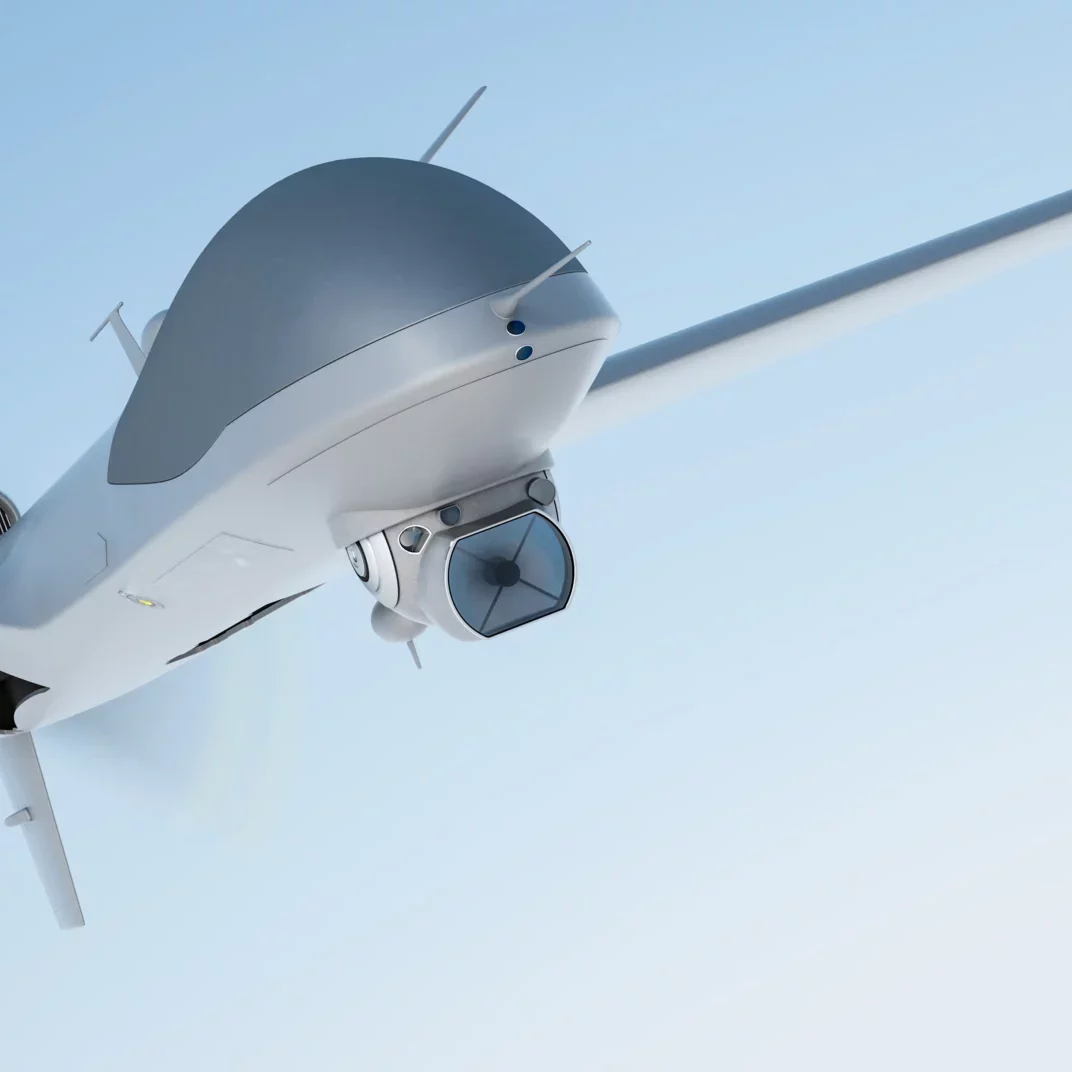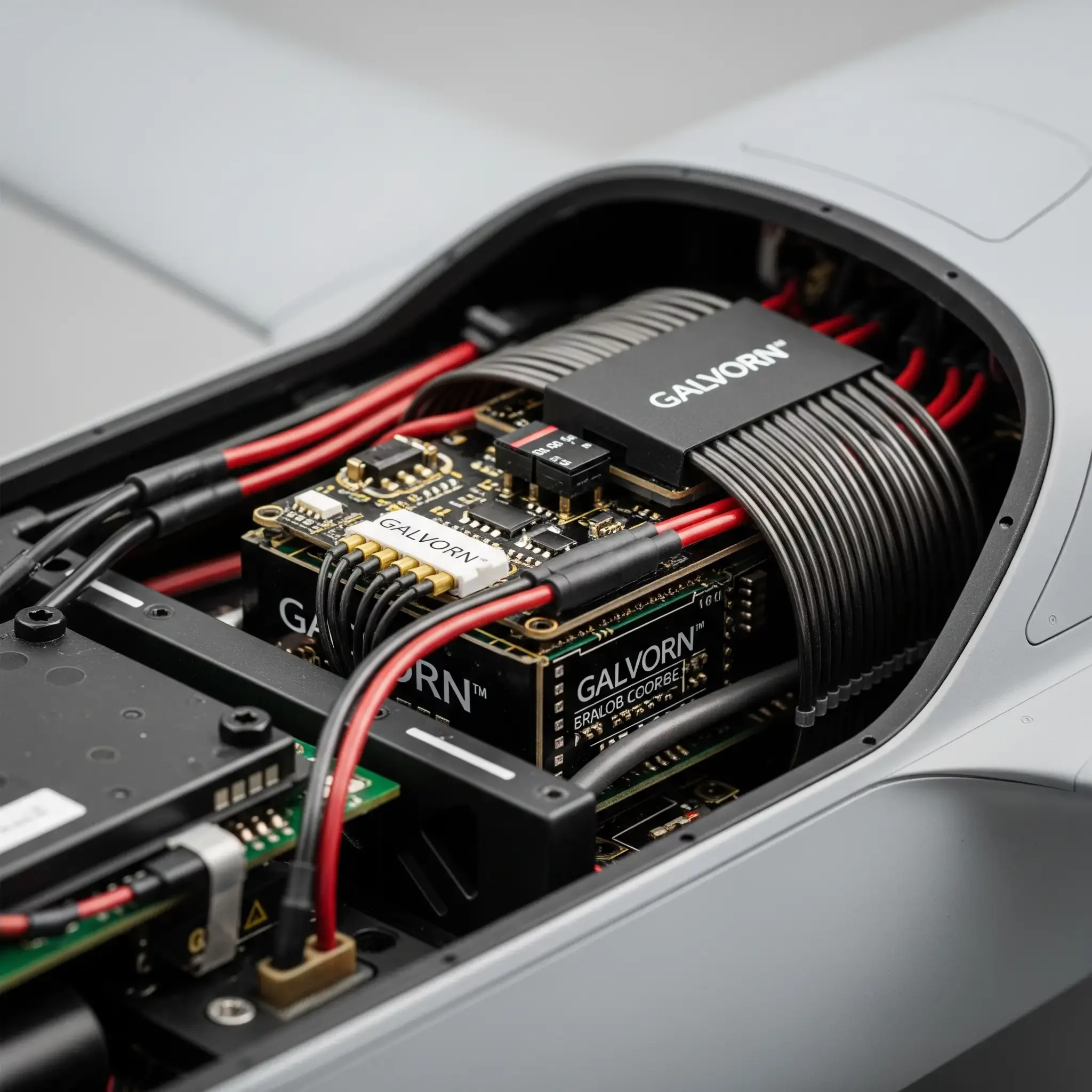Galvorn carbon nanotube wire is engineered to meet the rigorous demands of the next generation of aerospace and defense technology. From drones and UAVs to CubeSats and satellites to manned aircraft, Galvorn offers a transformative leap in material science, delivering unprecedented performance and reliability.
KEY FEATURES & BENEFITS

Extreme Lightweighting
-
Significantly reduce overall weight in unmanned and manned systems.
-
Increased fuel efficiency and extended flight times.
-
Boost payload capacity and operational range for unmanned systems.
Galvorn is exceptionally lightweight. The single filament fiber has a density of 1.6 g/cm³, making it 80% less dense than copper (9.0 g/cm³) and approximately half the density of aluminum (2.7 g/cm³). Depending on the diameter of Galvorn wire / yarn you choose (150-5000 µm), its density is 0.7-1.2 g/cm3. Download the spec sheet.
This translates directly into substantial lightweighting opportunities. For example, replacing 28 AWG copper signal wire with Galvorn wire can reduce weight by approximately 70 grams per 100 meters. Considering that signal wire can constitute 50-60% of aircraft wiring, these weight savings accumulate significantly, leading to improved fuel efficiency, extended flight times, and increased payload capacities for unmanned and manned systems.
Unmatched Strength & Durability
-
Exceptional durability and resilience in demanding environments.
-
Enhanced structural integrity for critical components.
Aerospace and defense wire and cable must endure extreme mechanical stress and harsh operational environments. Galvorn is 50 times stronger than copper, 30 times stronger than aluminum, and 15 times stronger than steel on a per mass basis, significantly enhancing the durability and resilience of wiring systems. It is the strongest carbon nanotube (CNT) wire commercially available today. This superior strength ensures long-term reliability by resisting wear and tear from constant vibration, flexing, and other mechanical forces, which is critical for maintaining signal integrity and power delivery in mission-critical drones, UAVs, CubeSats, satellites, and manned aircraft.


Superior Flexibility
-
Easy installation in tight spaces.
-
Ideal for moving parts and applications requiring constant bending.
-
Damage-resistant even when tied into a tight knot.
Galvorn offers an astounding 1000 times the flex life of copper, behaving much like a textile. This characteristic makes it ideal for applications requiring constant bending and flexing, such as any moving parts within drones or UAVs. Its superior bend radius allows for installation in extremely tight spaces, with Galvorn fibers even capable of being tied into a tight knot without damage.
Excellent Thermal Dissipation
-
Efficient heat management for high-performance electronics.
-
Increased current carrying capacity per mass.
Galvorn carbon nanomaterials are very good at dissipating heat. This property is crucial for high-performance electronics and power cables, enabling higher current carrying capacity on a per mass basis. For a given weight of wire, Galvorn can safely carry more electrical current than copper because it's both lighter and better at dissipating the heat generated by that current. This is a significant advantage for high-performance electronics and power cables in applications like drones, UAVs, and CubeSats, where every gram of weight saved directly impacts efficiency and performance.
Its textile-like form factor can also be leveraged to increase surface area, potentially leading to even better heat transfer in specific applications.
The single filament fiber has a thermal conductivity of 450 W/m-K, surpassing copper's at 385 W/m-K. For applications that require larger diameter Galvorn wire / yarn (150 - 5000µm), the thermal conductivity is 200 - 300 W/m-K.


Exceptional Corrosion & Oxidation Resistance
-
Inherently stable; does not corrode or oxidize.
-
Durable in harsh environments.
-
Flame-resistant and does not melt.
Unlike copper, Galvorn is inherently stable and does not corrode or oxidize over time, no rusting or pitting even after prolonged use in harsh environments. Its carbon-carbon bonds provide inherent resistance to oxidation and chemical reactions under standard conditions, making it exceptionally durable. As an advanced carbon material, Galvorn also has the advantage of being extremely flame-resistant and it does not melt.

